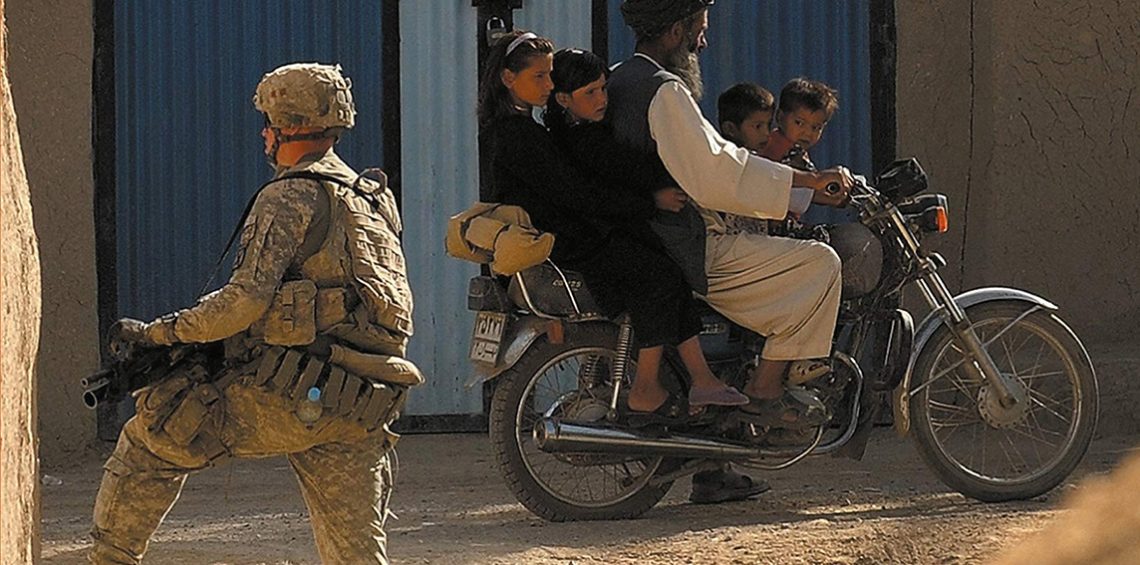
America in Afghanistan
The author does not merely present the story, he relives it and with him, all his readers. Dorani, Afghani himself, infuses the book with his personal interest and emotional connection to his country, explaining vividly why his homeland “has received nothing from the four-decade-long war but an extraordinary amount of suffering” and above all shows that he and his fellow citizens are so “thirsty and hungry for peace and security”, explaining what it means to be an Afghan; and what those who have never experienced life in a war zone cannot understand. He raises questions about how people see their ancient country’s history sullied, why they feel alienated within their own country and eventually have to flee to survive, how it feels when all the decisions affecting the country’s future are made elsewhere, leaving the people powerless to create their own future, whatever it might be. The reader is left with frustration, but also compassion, for Afghanistan’s harshreality.
Divided into three main chapters placed in chronological order, from 2001 till 2018, the book offers pertinent analyses of the actions of Presidents Bush, Obama and Trump towards Afghanistan. The subchapters follow almost step-by-step the challenges, the discussions, the arguments and finally the decisions of the presidents’ cabinets, giving the reader the sense of being present at the Pentagon and the White House and so the reader comes to understand the unrelenting chaos that has plaguedAfghanistan, as well as the reasons why the Soviets, the Americans and other powers chose Afghanistan for their operations. Dorani explicates the local governments’ impotence, as well as the roles other states played in creating this unique situation. The in-depth geopolitical and historical analysis shows how deep these roots go and how this complex situation needs time and effort to resolve: even more time for a resolution that would prioritize the interests of the Afghan people themselves.
Of particular interest is Dorani’s analyzis of American foreign policy, particularly how that changed after September 11, 2001; he distances himself from the numerous conspiracy theories that could lead him off target. Yet he does not wish to offer direct answers to the questions he sets, instead allowing readers to draw their own conclusions. Dorani’s personal experiences as a native Afghani, the deep understanding of the culture that only a native can have, along with his access to sources written in English but also the Afghani languages, Pashto and Dari, allow the writer and in turn his reader to be exposed to countless sources that would otherwise be entirely inaccessible to a general audience: the result is first-hand reactions, not as presented or translated by foreign media but with the depth and accuracy of a native of both the land and its languages. The book reveals the reactions of people and media towards their government and foreign interventions, and their inability to plan their own future. The reader is granted access to the true face of Afghanistan and her people, fatigued by war and hungry for home-grown freedom.
This knowledgeable and dedicated international scholar offers readers a well-tuned work on a highly complex topic that should not be missed by those who want to learn the contemporary history of a wounded country, whose story goes far beyond mass media representation, and is the real and felt experience of millions. Dr. Sharifullah Dorani is one of these millions; he infuses his own experiences and knowledge into this exceptional case study that will surely promote further research into this poorly understood region.
The new book by Dr. Sharifullah Dorani, “America in Afghanistan: Foreign Policy and Decision Making from Bush to Obama to Trump” is not just another story of Afghanistan’s troubled past, but rather is a remarkable account of the country’smodern history with details, facts and figures that presents in its entire the reasons that made Afghanistan, in spite of its ancient and rich civilization, reknowned globally for all the wrong reasons.